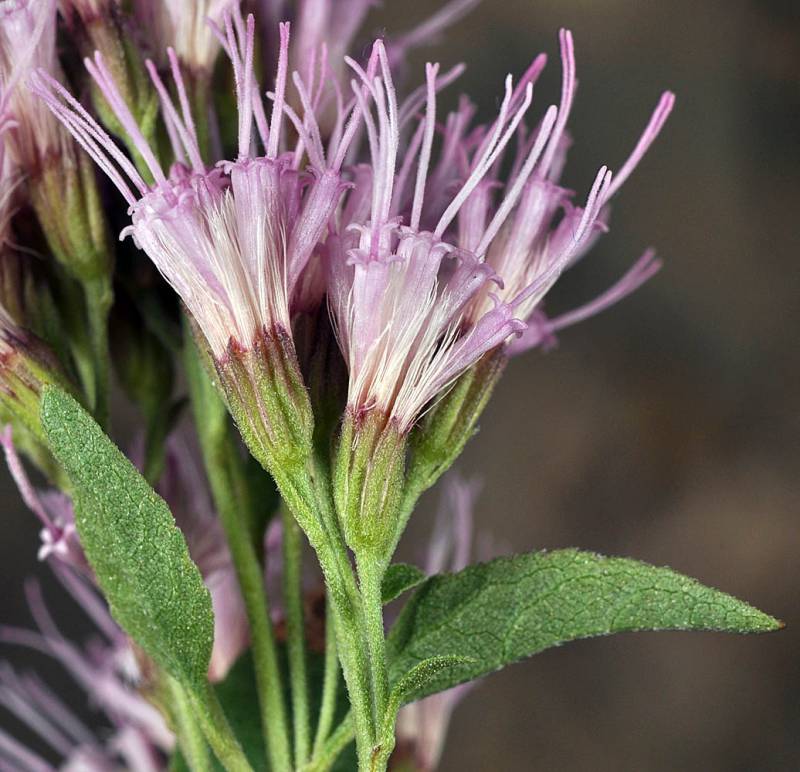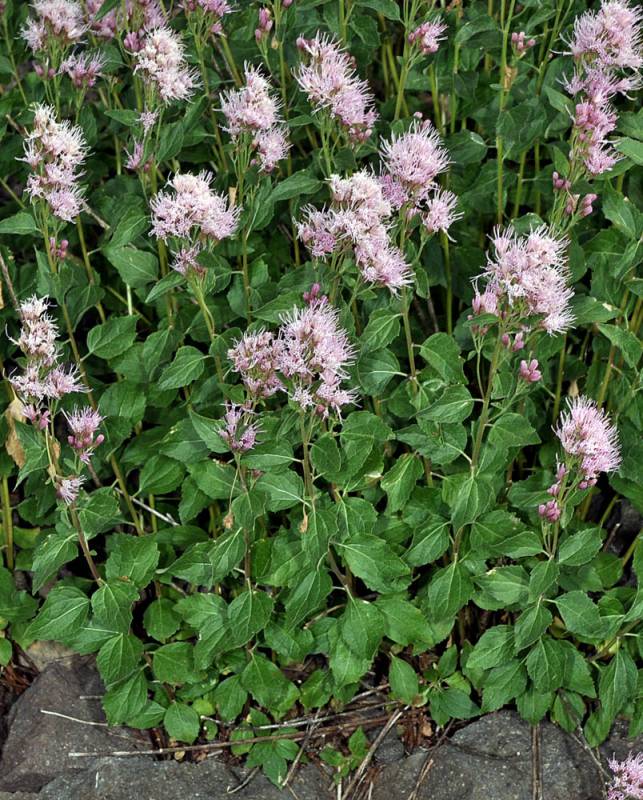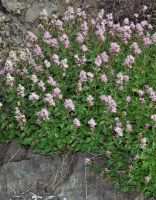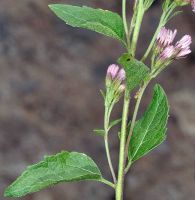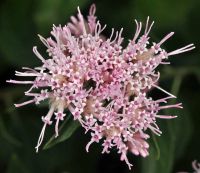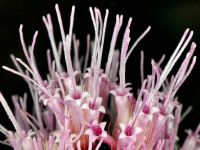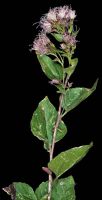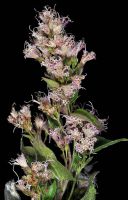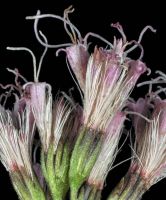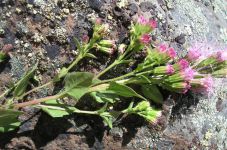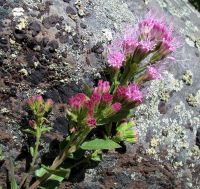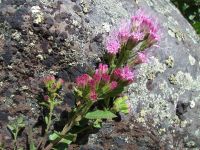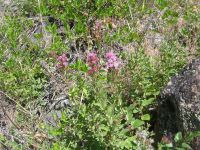Distribution: Occurring east of the Cascades crest in Washington; Washington to California, east to Montana, Utah, and Nevada.
Habitat: Rocky places at various altitudes.
Flowers: June-August
Origin: Native
Growth Duration: Perennial
Conservation Status: Not of concern
Pollination: Bees, flies, beetles, wasps
Rhizomatous perennial from a woody base, the several stems 1.5-7 dm. tall.
Leaves alternate or a few opposite, petiolate, narrowly to broadly deltoid or deltoid-ovate, 1.5-6.5 cm. long, more or less toothed, glandular on the lower side.
Heads small, clustered at the ends of the stems and branches; involucre 3-6 mm. high, the bracts about equal; flowers all tubular and perfect, the corollas pink to red-violet, 9-21 in each head; style branches club-shaped; pappus of capillary bristles; receptacle naked.
Achenes 5-angled, glandular.
Publication: Phytologia. 19: 224. 1970.
PNW Herbaria: Specimen records of Ageratina occidentalis in the Consortium of Pacific Northwest Herbaria database.
WA Flora Checklist: Ageratina occidentalis checklist entry.
OregonFlora: Ageratina occidentalis information.
E-Flora BC: Ageratina occidentalis atlas page.
CalPhotos: Ageratina occidentalis photos.
USDA Plants: Ageratina occidentalis information.

